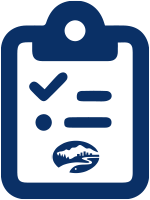Past Regional Work
Here is a selection of past Fraser Basin Council initiatives in the Thompson Region.
The Fraser Basin Council for many years brought together various agencies and private land owners to identify, discuss and address issues in the Nicola watershed — and to advance research projects.
Reports, Resources and Meeting Materials
To download reports, meeting materials and resources developed in the Nicola Basin Collaborative initiative, visit the Nicola Basin Collaborative Archive.
Data Files
For data files from the 2021 Coldwater River Inventory and Mapping (RIM) project, visit Data Files SHIM and AHI Archive.
Nicola Water Use Management Tool
You can access the Nicola Water Use Management Tool online. The tool is managed by the Scw’exmx (Nicola) Tribal Council. If you don’t have an account, click “request account” in the bottom right of the page.
Province of BC Ecological Catalogue Database (EcoCat)
For other related materials, check* the BC Ecological Catalogue database (EcoCat).
* Note: Search (for example) by “Nicola” or Coldwater” and scan search results, which appear in alphabetical order.
The Thompson Steelhead Working Group was a multi-governmental collaborative initiative formed in 2014 to to develop a recovery and management plan for Thompson Steelhead. The Working Group brought together representatives of the Nlaka’pamux and Secwepemc First Nations, the Province of BC and the Government of Canada (Fisheries and Oceans Canada).
The Fraser Basin Council served as secretariat for several years.
The Working group hosted a Steelhead Assembly in 2016 (see Thompson Steelhead Assembly and developed a draft Thompson Steelhead Recovery and Management Plan for comment and discussion.
The future of Thompson steelhead was serious, however, and returns continued to decline.
By February 2018 the Committee on the Status of Endangered Wildlife in Canada (COSEWIC) concluded that two populations of sea‐going steelhead trout breeding in BC’s Thompson and Chilcotin river systems (Oncorhynchus mykiss, TRS and CRS respectively) were at imminent risk of extinction. Both populations were assessed as Endangered, and COSEWIC recommended an emergency listing under the federal Species at Risk Act. Only 177 fish returned from the sea to the Thompson River in late fall 2017 and 58 returned to the Chilcotin River. COSEWIC confirmed its assessment in 2020.
The main threats included declining habitat quality and ocean survival from such factors as interception by fisheries. The returning numbers of spawners were then very low and future population declines were expected. The species, however, was not listed under the federal Species at Risk Act.
For a current initiative underway to support salmon habitat in the region, see Thompson-Shuswap Salmon Collaborative.
In 2018 seven local governments and three Secwepemc governments agreed to a long-term, cooperative government-to-government relationship. The aim was to foster open communication across the Shuswap watershed portion of Secwepemc’ulecw.
The Fraser Basin Council was pleased to have supported the process leading to the agreement.
The Shuswap Local and Secwepemc Governments Communications Agreement had four goals, which are to:
- integrate local government and Secwepemc communities on matters of mutual interest through regular communication and working together on joint initiatives
- provide a collective voice to the governments of BC and Canada on common issues
- raise awareness of Secwepemc’ulecw and Secwepemc traditions, and
- deliver joint education opportunities for elected officials, staff and residents, members and constituents
The governments agreed to meet in formal and informal settings and to work together on initiatives of joint benefit to local and Secwepemc governments. The agreement complemented existing protocols and provided a foundation for future agreements.
Signatories were Cst’elnec (Adams Lake Indian Band), Sk’atsin (Neskonlith Indian Band), Splatsin, Columbia Shuswap Regional District, Regional District of North Okanagan, Village of Chase, City of Salmon Arm, City of Enderby, Village of Lumby and District of Sicamous.
In March 2016 the Fraser Basin Council helped prepare an update to the Strategic Review of Fisheries Resources for the South Thompson–Shuswap Habitat Management Area, a 1997 publication of Fisheries and Oceans Canada (DFO).
The Strategic Review summarized fisheries resource information related to:
- four anadromous species of Pacific salmon: Chinook, Sockeye, Coho and Pink
- major land and water uses influencing fisheries production within the habitat management area, and
- watershed management issues and recommendations for all the sub-drainage areas
Resource managers in all orders of government, as well as stewardship and conservation organizations, have used the Strategic Review to inform decision-making and help prioritize their work. It is hoped the updated version will continue to prove a valuable resource.
In 2015 the Fraser Basin Council contracted Ecoscape Environmental Consultants Ltd. to complete a comprehensive inventory of the South Thompson/Thompson River from Little Shuswap Lake (Chase) downstream to Kamloops Lake and to subsequently complete an aquatic habitat index.
The project report (version 1) was completed in 2016: the South Thompson River Inventory, Mapping, and Aquatic Habitat Index.
FBC managed this project on behalf of the Thompson-Nicola Regional District (TNRD), City of Kamloops, Adams Lake Indian Band and Tk’emlups te Secwepemc. The work was funded by the TNRD and the Government of Canada through the National Conservation Plan.
In July 2015 a multi-interest Nicola Lake Steering Committee, which was overseeing implementation of an Nicola Lake Action Plan, decided that it should expand its terms of reference to address issues affecting the whole of the Nicola watershed. The Nicola Steering Committee oversaw several projects in 2015-2016 to benefit the watershed — in particular, development of a Nicola Water Management Tool (NWMT).
The NWMT was intended to allow operators at the Nicola Lake Dam to consider a wider range of biophysical, ecological and socio-economic factors helpful for dam operations, including the in-lake and downstream consequences of water releases, such as predicted flows at key index locations. An interim tool was operational was July, 2016 to help with drought management.
The Fraser Basin Council and Fisheries and Oceans Canada hosted very popular annual BC Interior Stewardship Workshops between 2005 and 2015. These brought together government employees, watershed stewards, agricultural and other industry representatives from across the region to learn, network and get out in the field to advance their understanding of ecosystem monitoring, conservation and restoration.
A highlight was the annual presentation of the Fraser Basin Council’s BC Interior Stewardship Award for Ecosystem Excellence.
Congratulations to the Award recipients through the years!
- 2015 — Adams River Salmon Society
- 2014 — Neil Brookes
- 2013 — Wayne Salewski
- 2012 — Harold Ridgway
- 2011 — Tracy Bond
- 2010 — Mike Wallis (2010 Individual Award)
- 2010 — Cayoose Creek First Nation/ St’at’imc (2010 Organization Award)
- 2009 — Tom Minor
- 2008 — Dora McMillan
- 2007 — Jamie Felhauer
The Columbia Shuswap Regional District (CSRD) supported the development of a management plan for Gardom Lake to benefit both area residents and visitors. The CSRD retained the Fraser Basin Council to coordinate and facilitate a collaborative planning process and to develop a plan. The planning process, including a public open house, was completed in May 2015.
Issues of concern were identified:
- Water quality (e.g., sediment, nutrient levels, pollution, septic systems, sanitation practices)
- Water quantity (e.g., water withdrawals, lake levels)
- Fish & Wildlife (e.g., bird habitat, fish habitat, stocking and populations, fishing regulations, species at risk)
- Native/non-native terrestrial and aquatic plant species
- Recreation (e.g., noise impacts from boats, firearms and fireworks)
- Foreshore changes by residents and visitors (e.g., modifications, wood removal)
- Lake access (e.g, parking, infrastructure, congestion)
- Facilities (e.g., washrooms, garbage, maintenance)
- Enforcement of laws or bylaws
Following a review by the CSRD, the plan was finalized: Gardom Lake Management Plan (Final). It set out a vision, goals, short and long-term objectives, and measurable actions for the management of Gardom Lake. The plan was advisory to the CSRD and to other agencies with regulatory or other responsibilities for the lake.
If a picture is worth 1,000 words, a map is that many times over! For decision-makers, interactive online maps are a particularly rich resource. They offer a visual interpretation of multiple layers of data and can be customized and reworked on the fly.
The Fraser Basin Council has worked with different partners in the Thompson region, including the Community Mapping Network (CMN), to make new maps publicly available. These have included:
The Watershed Evaluation of Beneficial Management Practices (WEBs) was a Canada-wide program to measure the economic and water quality impacts of specific agricultural beneficial management practices at nine watershed sites. These included the Salmon River watershed in BC’s Shuswap region. The Fraser Basin Council was part of a WEBs project on the Salmon River that was aimed at helping producers increase efficiency in irrigation.
Work in the Salmon River watershed began in 2004. Federal agriculture statistics then showed more than 300 farms in the area — primarily for beef and sheep ranching, dairy farming and forage production. The region was dry during the growing season, and water from the Salmon River is used to produce forage for winter livestock feeding. The initial focus of the program (2004-2008) was on improving water quality and riparian health through cattle exclusion fencing and off-stream watering. The Agriculture and Agri-Foods Canada prepared reports on the projects.
A subsequent initiative focused on irrigation efficiency, including through expansion of the network of local climate stations in the region, and helping agricultural producers use evapotranspiration and other data to plan irrigation schedules. This project ran 2010-2013 through a partnership of Agriculture and Agri-Foods Canada, BC Ministry of Agriculture, Ministry of Natural Resource Operations, ARDCORP (Environmental Farm Plan) and Salmon River Watershed Roundtable. FBC provided secretariat, education and outreach support for portions of the project.
In 2010-2011 FBC’s staff in the region also helped promote irrigation beneficial management practices among agricultural producers.
The Shuswap Lake Integrated Planning Process (SLIPP) was launched as a three-year pilot project in 2008, with the collaboration and participation of 13 partners. These represented the four orders of government (Federal, Provincial, Local and First Nations), multiple public agencies and community groups.
The pilot project transitioned into a three-year program (2011-2014). It focused on responding to increasing pressures on the lakes from agriculture, development, wastewater discharge and recreational use. The challenges were set against a complicated regulatory environment where public agencies from every level of government had legal jurisdiction over some aspect of these water bodies and surrounding area.
There was interest among the SLIPP partners to bring land and water use planning and governance issues affecting the Shuswap watershed to a single table. The aim was to have the agencies share information, identify cross-cutting issues, and look for new opportunities to collaborate.
The SLIPP pilot project demonstrated the value of collaboration among the agencies responsible for water, land, wildlife, and public health and safety in the Shuswap, and working with other key interests. The approach has helped break down silos, improve inter-agency communication and undertake work that would otherwise be beyond the capacity of any one body.
SLIPP Resources
The final SLIPP report is available. Other project resources can be accessed in a SLIPP archive.



